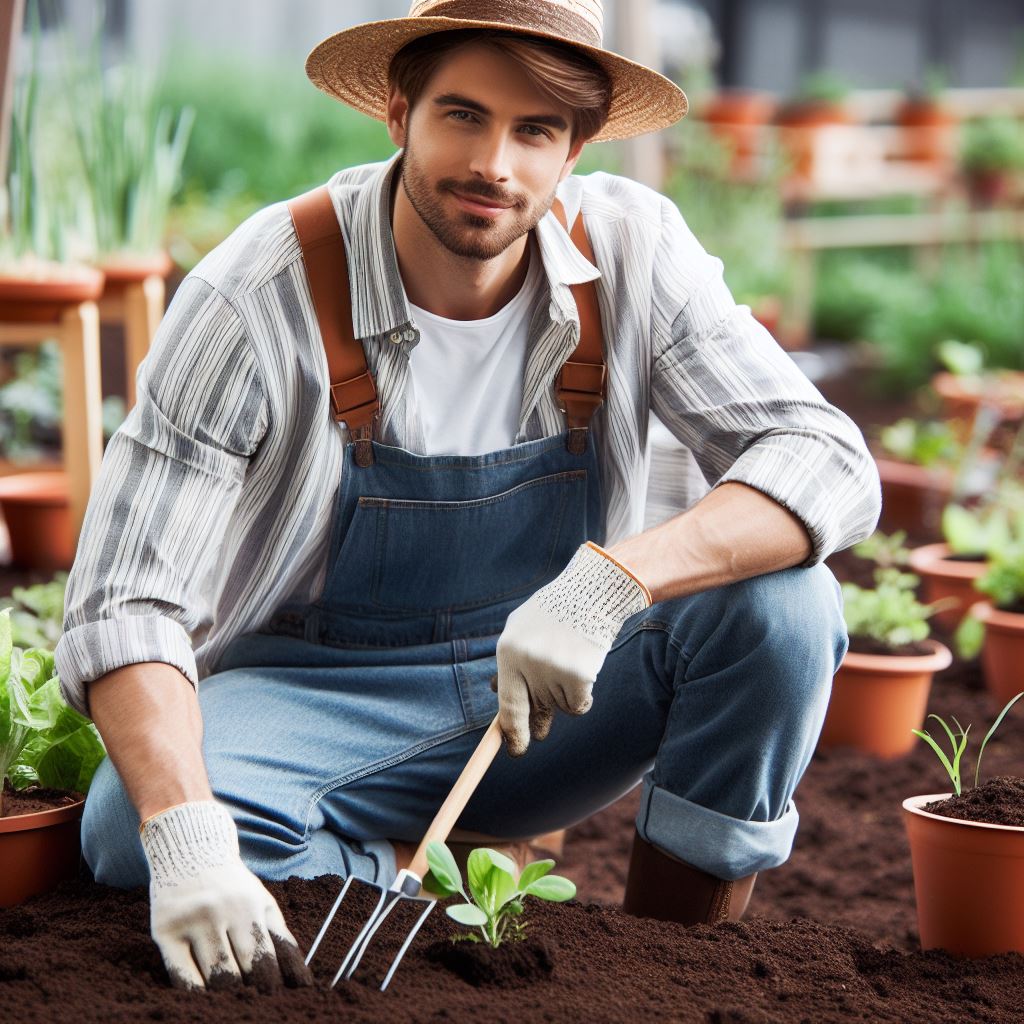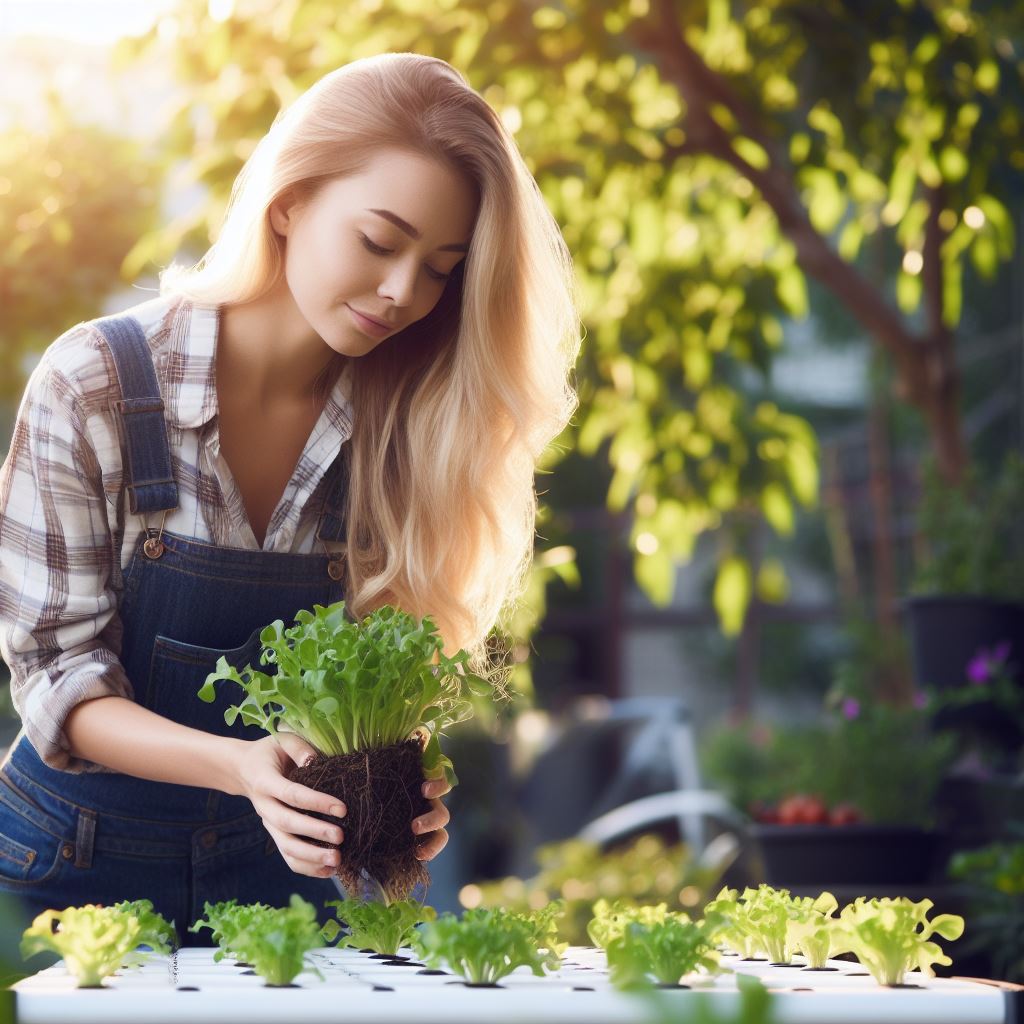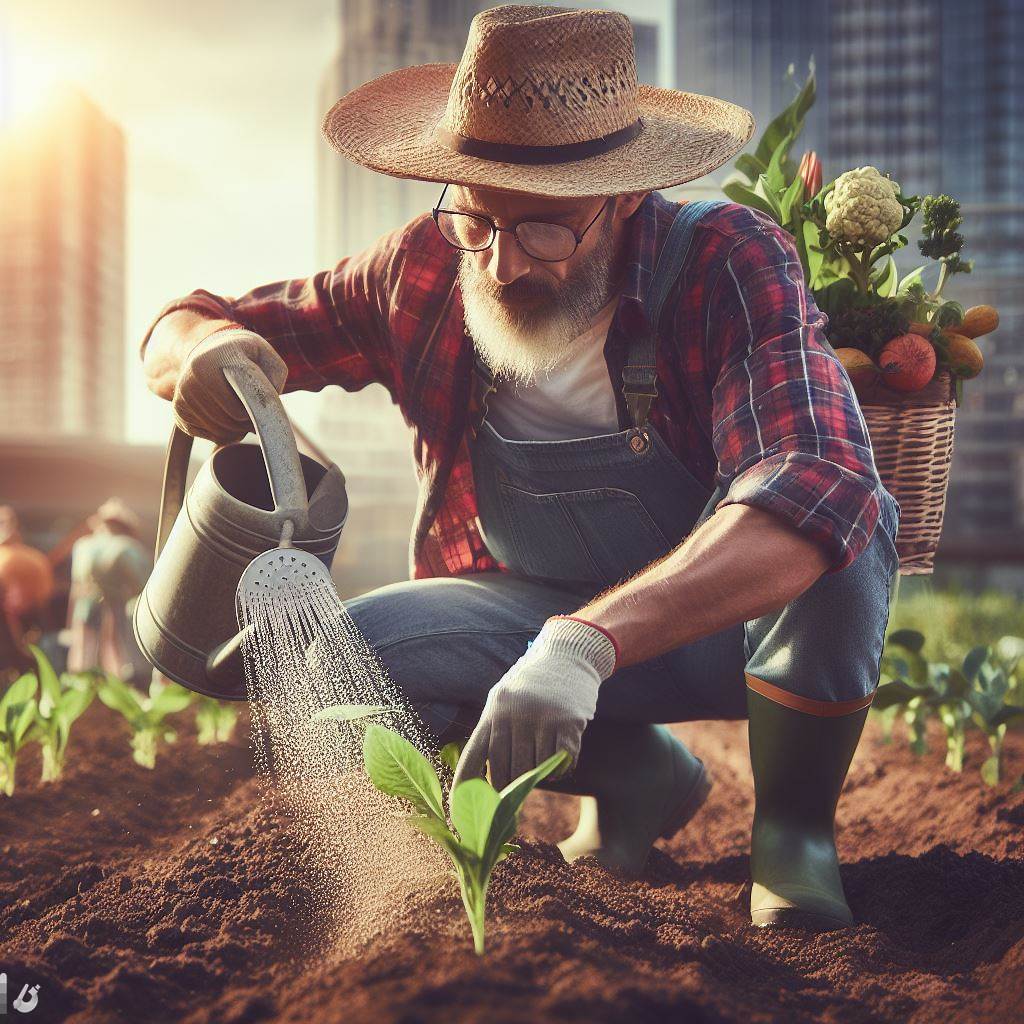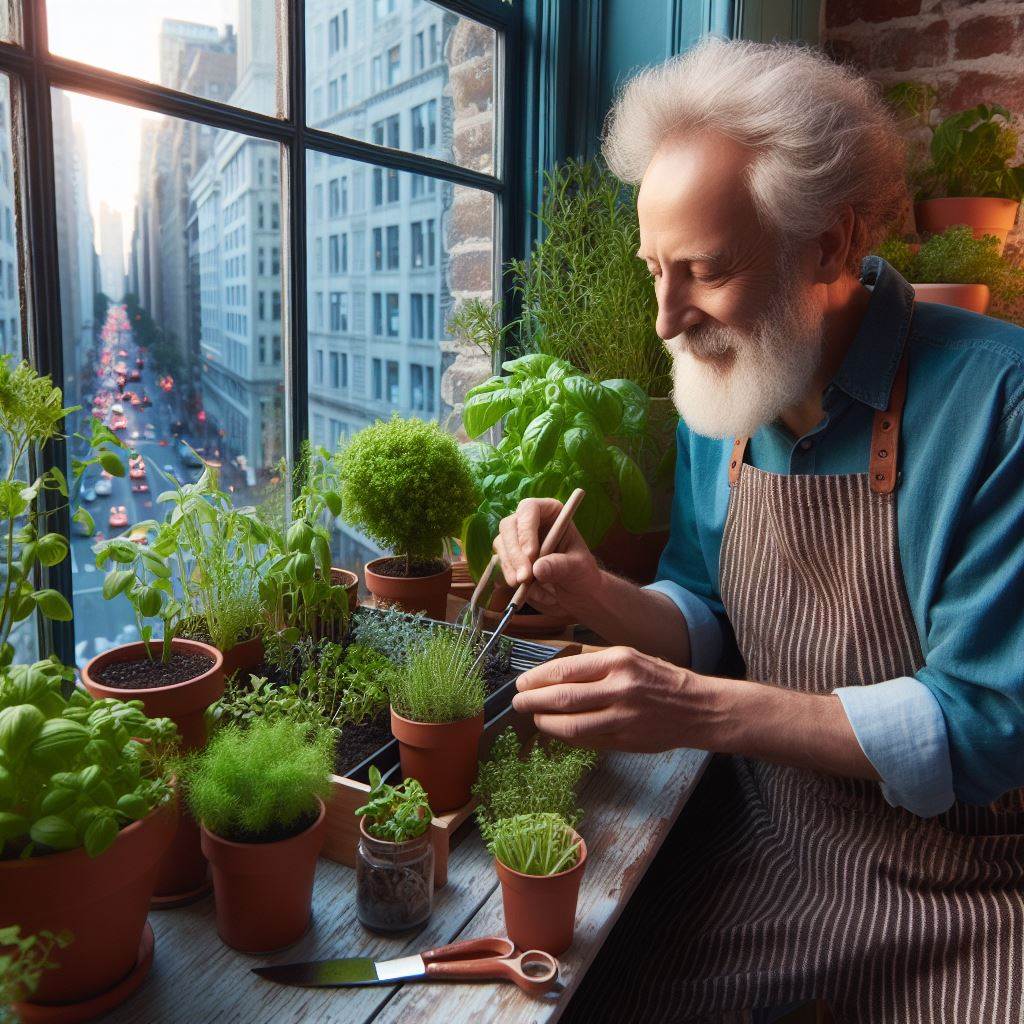Introduction
Welcome to the enchanting realm of Balcony Gardens, where the constraints of small spaces transform into boundless opportunities for cultivation.
Gardening is crucial for mental health and environmental benefits.
Balcony gardens offer a solution for growing plants in limited spaces.
In this lush haven, we explore the artistry of growing amidst limited dimensions, turning balconies into flourishing canvases of greenery.
Join us on a journey where innovation meets nature, as we delve into the intricacies of cultivating your own verdant haven in the heart of urban living.
Balcony Gardens beckon, inviting you to embrace the beauty of small-scale cultivation and discover the magic that unfolds within these intimate spaces.
With urbanization, these gardens have gained popularity as they maximize small areas.
Benefits of Balcony Gardens
Creating a connection with nature
- Balcony gardens provide an opportunity to establish a tangible bond with the natural world.
- Being surrounded by plants and greenery can uplift our spirits and make us feel more connected to nature.
- Engaging with plants can help us understand and appreciate the beauty and intricacies of the natural environment.
Enhancing aesthetics
- Balcony gardens have the power to transform dull and barren spaces into vibrant and visually appealing areas.
- The variety of colors, textures, and shapes of different plants can add depth and character to any balcony.
- With careful planning and arrangement, balcony gardens can become mini paradises that showcase our personal style and taste.
Promoting mental well-being
- The presence of plants in our surroundings has been proven to reduce stress and anxiety levels.
- Engaging in gardening activities, such as planting, watering, and pruning, can have a calming effect on our minds.
- Balcony gardens provide an opportunity to practice mindfulness and enhance our overall mental well-being.
Providing fresh produce
- Growing our own fruits, vegetables, and herbs in balcony gardens allows us to access fresh and nutritious produce.
- It gives us control over the quality of the food we consume, ensuring it is free from harmful chemicals.
- Balcony gardens can also be a source of joy and pride as we savor the taste of our homegrown harvest.
Conservation of resources
- Balcony gardens promote sustainable living by utilizing limited resources effectively.
- Water can be conserved through techniques like drip irrigation or reusing greywater for watering plants.
- Growing plants in small spaces encourages vertical gardening, maximizing the use of available area.
Incorporating these benefits into our lives
- Start by assessing the available space on your balcony and envisioning the kind of garden you want.
- Consider the climate, sunlight exposure, and wind conditions to choose suitable plants for your balcony.
- Invest in containers or hanging baskets that match the aesthetics of your balcony and provide good drainage.
- Select a variety of plants that offer different colors, heights, and growth patterns to create an attractive visual display.
- Regularly water, fertilize, and prune your plants to ensure their health and longevity.
- Take time to sit and appreciate your balcony garden, immersing yourself in the tranquility and beauty it offers.
- Utilize your homegrown produce in your meals and share the joy of fresh, flavorful food with your loved ones.
- Experiment with different plants and gardening techniques to continually enhance your balcony garden experience.
In fact, balcony gardens have numerous benefits, ranging from creating a connection with nature to providing fresh produce.
They enhance aesthetics, promote mental well-being, and contribute to resource conservation.
By incorporating a balcony garden into our lives, we can enjoy the beauty of nature, improve our well-being, and experience the satisfaction of growing our own food.
Choosing the Right Plants for Balcony Gardens
A thriving balcony garden requires careful consideration when selecting plants that will thrive in small spaces. Here are some essential factors to consider:
- Space Limitations: Space is often limited in balcony gardens, so it’s crucial to choose plants that won’t outgrow their containers or overcrowd the area.
- Available Sunlight: Determine the amount and duration of sunlight your balcony receives. Some plants require full sun, while others prefer partial shade.
- Suitable Container Plants: Opt for plants that do well in containers, such as dwarf varieties or those with shallow root systems. Consider the size and weight of the containers as well.
- Soil Quality and Drainage: Ensure the soil used in your containers is of high quality and well-draining. Balcony gardens require lightweight potting mixes that retain moisture without becoming waterlogged.
To further assist you in choosing the right plants, here are some recommended options for balcony gardens:
- Herbs: Basil, thyme, rosemary, and mint are excellent choices for small gardens. They require minimal space and can add fresh flavors to your cooking.
- Flowering Plants: Petunias, marigolds, pansies, and geraniums are popular options for adding vibrant colors and cheerful blooms to your balcony garden.
- Leafy Greens: Lettuce, spinach, kale, and Swiss chard are ideal for balcony gardens as they can be harvested continuously and take up minimal space.
- Climbing Plants: If you have a balcony railing or trellis, consider plants like ivy, morning glory, or jasmine to create a vertical garden and make the most of your space.
Remember to consult local gardening resources or experts for more options suitable for your specific climate and conditions.
In essence, to create a thriving balcony garden, carefully choose plants that are suitable for small spaces, considering space limitations, sunlight availability, container suitability, climate, and soil quality.
By selecting the right plants, you can create a beautiful and functional garden that brings joy and freshness to your balcony.
Transform Your Agribusiness
Unlock your farm's potential with expert advice tailored to your needs. Get actionable steps that drive real results.
Get StartedRead: Soil Health: Tips for Small-Scale Farmers
Setting Up a Balcony Garden
When it comes to creating a beautiful and functional balcony garden, there are several important aspects to consider.
From evaluating the balcony structure to choosing the right planting containers, every detail plays a crucial role in the success of your garden.
In this section, we will explore the various steps involved in setting up a balcony garden.
Evaluating Balcony Structure and Weight Limits
- Start by carefully examining your balcony’s structure to ensure it can support the weight of a garden.
- Consider consulting a professional if you are unsure about the load-bearing capacity of your balcony.
- Take into account any weight restrictions imposed by your building management or homeowner’s association.
Planning the Layout and Design
- Measure the available space on your balcony and create a rough sketch to plan the layout of your garden.
- Consider factors such as sunlight exposure, wind direction, and nearby structures when deciding where to place your plants.
- Choose a design theme or concept that reflects your personal style and creates a cohesive look for your balcony garden.
Determining Appropriate Planting Containers
- Consider the size and weight of your chosen plants when selecting appropriate containers.
- Opt for lightweight materials such as plastic, fiberglass, or fabric to minimize the overall weight on your balcony.
- Ensure the containers have proper drainage holes to prevent water from pooling and damaging your plants.
Setting Up a Proper Irrigation System
- Assess your watering needs and choose an irrigation system that suits your balcony garden.
- Options range from manual watering cans to automated drip systems or self-watering containers.
- Regularly check the moisture levels in your soil to avoid overwatering or underwatering your plants.
Incorporating Vertical Gardening Techniques
- Maximize your balcony space by implementing vertical gardening techniques.
- Use trellises, wall-mounted planters, or hanging baskets to grow plants vertically and create a lush green backdrop.
- Consider utilizing a vertical hydroponic system if you have limited floor space but ample wall space.
Utilizing Hanging Planters and Trellises
- Add depth and visual interest to your balcony garden by incorporating hanging planters.
- Select plants with trailing or cascading habits that will look stunning in hanging baskets.
- Install trellises or vertical supports to provide climbing plants with the necessary structure to grow.
Setting up a balcony garden requires careful planning and consideration of various factors.
Moreover, from evaluating balcony structure and weight limits to incorporating vertical gardening techniques, each step plays a vital role in creating a thriving and beautiful outdoor oasis in a small space.
Read: Hydroponics: Future of Urban Farming?
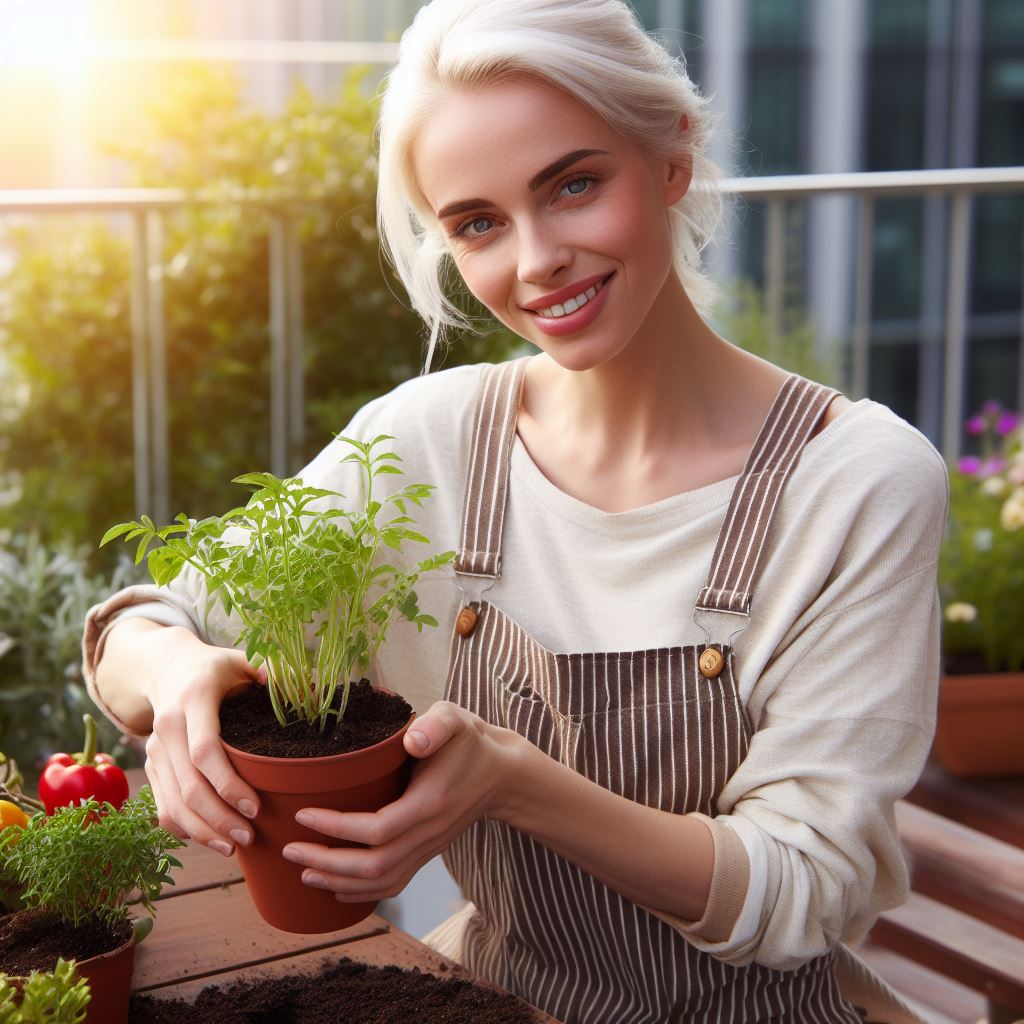
Essential Tips for Balcony Gardening Success
Providing adequate water and nutrients
- Use a watering can or drip irrigation system to ensure plants receive enough water.
- Regularly fertilize plants with organic fertilizers to promote healthy growth.
Regularly monitoring sunlight exposure
- Observe the amount of direct sunlight your balcony receives throughout the day.
- Choose plants that suit your balcony’s sunlight conditions, whether full sun, partial shade, or shade.
Managing pests and diseases
- Inspect plants regularly for signs of pests, such as aphids or mealybugs.
- Use organic pest control methods like neem oil or insecticidal soaps to protect your plants.
Pruning and harvesting techniques
- Prune your plants to encourage bushier growth and remove dead or diseased parts.
- Harvest vegetables and herbs when they are at their peak to maximize their flavor and nutrients.
Regularly checking soil moisture levels
- Stick your finger into the soil to determine if it’s dry before watering.
- Use a moisture meter or self-watering containers to maintain proper moisture levels.
Seasonal maintenance and care tips
- Adjust your gardening routine based on seasonal changes in temperature and sunlight.
- Protect plants from extreme weather conditions by moving them indoors or using protective covers.
Successful balcony gardening requires proper care and attention.
By following these essential tips, you can create a thriving garden in small spaces.
Read: Pest Control: Natural Solutions for Small Farms
Inspiring Balcony Garden Ideas
Adding a balcony garden to your small space can be a rewarding and fulfilling experience.
Whether you have a green thumb or are a beginner gardener, there are plenty of inspiring ideas to suit your style and preferences.
Herb and spice gardens
One great option is to create a herb and spice garden.
Not only will this provide you with fresh ingredients for your cooking, but it will also add a delightful scent to your balcony.
Choose herbs like basil, mint, rosemary, or thyme and plant them in pots or hanging baskets.
Flower and decorative plant arrangements
If you’re looking to add a pop of color to your balcony, consider flower and decorative plant arrangements.
Mix and match different types of flowers with varying textures to create an eye-catching display.
Choose plants that thrive in containers and require minimal maintenance.
Vegetable and fruit gardens
Eager to grow your own food? No problem! You can still have a vegetable and fruit garden on your balcony.
Utilize vertical gardening techniques by using trellises or hanging baskets.
Cherry tomatoes, lettuce, peppers, and strawberries are great options for small spaces.
Miniature and fairy gardens
For those who love all things magical and whimsical, miniature and fairy gardens can be a perfect choice.
Create a tiny landscape using small containers, dwarf plants, and miniature accessories like fairy houses or tiny benches. Let your imagination run wild!
Creating a relaxing garden oasis
If your goal is to create a peaceful and relaxing garden oasis, focus on incorporating elements that promote tranquility.
Showcase Your Farming Business
Publish your professional farming services profile on our blog for a one-time fee of $200 and reach a dedicated audience of farmers and agribusiness owners.
Publish Your ProfileOpt for comfortable seating, add ambient lighting, and choose plants known for their calming effects.
Lavender, jasmine, or even a small water feature can create a serene ambiance.
Incorporating sustainable gardening practices
Don’t forget to prioritize sustainability in your balcony garden. Use organic soil and fertilizer, collect rainwater for watering, and compost your kitchen scraps.
Choose native plants or species that are resistant to drought to conserve water and support local ecosystems.
In summary, balcony gardens offer endless possibilities for those with limited space.
From herb and spice gardens to miniature fairy landscapes, there is no shortage of inspiring ideas.
Transform your balcony into a green oasis and enjoy the beauty and benefits of gardening right at home.
Read: Top 10 Plants for Beginner Urban Gardeners
Discover More: Soil Health: Key to Thriving Organic Gardens
Overcoming Common Challenges
Limited Space and Plant Selection
Although the space may be small, there are plenty of options for balcony gardening.
Choose plants that are compact and suitable for containers.
Consider vertical gardening techniques such as using hanging baskets or trellises to maximize the use of space.
Wind and Temperature Exposure
Balconies are often exposed to strong winds and varying temperatures, which can affect plant growth.
Place windbreaks such as tall plants, trellises, or screens to provide some protection.
Use microclimates by strategically placing sturdy plants to shield more delicate ones from harsh conditions.
Dealing with Lack of Privacy
If privacy is a concern, create a sense of seclusion by using tall plants, trellises, or bamboo blinds.
Install decorative panels or screens that not only offer privacy but also add a touch of style to your balcony garden.
Addressing Potential Drainage Issues
To ensure proper drainage, use containers with drainage holes and cover them with gravel or pieces of broken pottery to prevent clogging.
Elevate the pots on pot feet or bricks to allow excess water to flow freely out of the containers.
Regularly check and clear the drainage holes to prevent water from accumulating and causing root rot.
Balancing the Weight on the Balcony
When gardening on a balcony, it is essential to consider the maximum weight capacity of the structure.
Use lightweight containers and consider the weight of the soil, plants, and accessories to distribute the load evenly.
Avoid placing too many heavy objects or excessive amounts of soil that could exceed the weight limit.
Concerns Regarding Noise and Odors
If noise from the surroundings is an issue, incorporate plants that can act as sound barriers, such as bamboo or tall shrubs.
Choose fragrant plants like lavender or jasmine to counter any unpleasant odors and create a more pleasant environment.
Position wind chimes or water features strategically to mask undesirable noises with soothing sounds.
Despite the challenges, balcony gardening can be a rewarding and enjoyable experience.
With careful planning and consideration of these common issues, you can create a vibrant and thriving garden in even the smallest of spaces.
Conclusion
Balcony gardening offers numerous benefits and possibilities for individuals with limited space.
By utilizing small spaces creatively, balcony gardeners can grow a variety of plants and vegetables.
Not only does balcony gardening enhance the aesthetic appeal of a space, but it also improves air quality.
Furthermore, balcony gardens provide opportunities for exercise, relaxation, and stress reduction.
With careful planning and maintenance, balcony gardeners can enjoy fresh produce and beautiful floral displays.
Therefore, I encourage all readers to start their own balcony gardens and reap the rewards.
Don’t let limited space hinder your gardening dreams; balcony gardening is a fantastic solution.
Lastly, it’s crucial to understand the importance of gardening in small spaces for our overall well-being.
Gardening connects us with nature, boosts our mental health, and encourages sustainable living practices.
So, let’s take the first step towards creating our own green oasis on our balconies and enjoy the journey!

